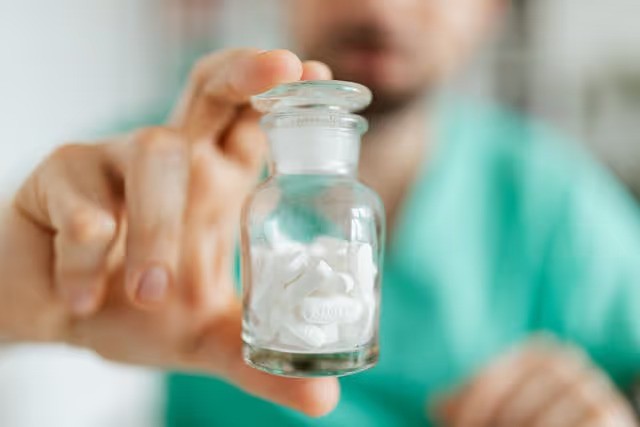Introduction to Suboxone
Suboxone is a medication commonly used in the treatment of opioid dependency. It combines two active ingredients, buprenorphine and naloxone, to help individuals manage their addiction and reduce withdrawal symptoms. Suboxone is a prescription medication that should only be used under the guidance of a qualified healthcare professional.

What is Suboxone?
Suboxone is a brand-name medication that contains two main ingredients: buprenorphine and naloxone. Buprenorphine is a partial opioid agonist, which means it attaches to the same receptors in the brain as opioids but produces a milder effect. Naloxone, on the other hand, is an opioid antagonist that blocks the effects of opioids and helps prevent misuse.
Suboxone is available in the form of sublingual tablets or film, which are placed under the tongue and allowed to dissolve. This route of administration allows for efficient absorption of the medication into the bloodstream.
Purpose and Uses of Suboxone
The primary purpose of Suboxone is to aid in the treatment of opioid dependency. It is used as part of a comprehensive treatment program that includes counseling, behavioral therapies, and support systems. Suboxone helps individuals manage their addiction by reducing withdrawal symptoms and cravings, allowing them to focus on their recovery journey.
Suboxone is specifically indicated for adults and adolescents aged 16 years and older who have agreed to participate in a complete treatment program. It is used as a long-term maintenance treatment to help individuals gradually reduce their dependence on opioids and work towards sustained recovery.
Table: Medical Conditions Treated by Suboxone

Suboxone is a valuable tool in the management of opioid dependency, helping individuals regain control of their lives and work towards a healthier future. It is important to note that Suboxone should only be used as part of a comprehensive treatment plan under the supervision of a healthcare professional.
Composition and Function
Suboxone is a medication that is commonly used in the treatment of opioid dependency. Understanding its composition and how it functions in the body can provide valuable insights into its therapeutic effects.
Active Ingredients of Suboxone
Suboxone is a combination medication that contains two active ingredients: buprenorphine and naloxone.
Buprenorphine is a partial opioid agonist, meaning it binds to the same receptors in the brain as opioids but produces a milder effect. It helps to alleviate withdrawal symptoms and reduce cravings without producing the same intense high as other opioids. Buprenorphine has a long duration of action, allowing for once-daily or less frequent dosing.
Naloxone, the second active ingredient in Suboxone, is an opioid antagonist. Its inclusion in the medication is to discourage misuse or abuse. Naloxone blocks the effects of opioids and can precipitate withdrawal symptoms if Suboxone is misused by injection.
The combination of buprenorphine and naloxone in Suboxone provides a balanced approach to opioid addiction treatment, addressing both the physical dependence and the risk of misuse.
How Suboxone Works in the Body
Suboxone works by binding to the opioid receptors in the brain, displacing other opioids and reducing their effects. The buprenorphine component of Suboxone activates these receptors to a moderate extent, alleviating withdrawal symptoms and reducing cravings. The partial agonist activity of buprenorphine helps to stabilize the brain’s opioid receptors without producing the intense euphoria associated with full opioid agonists.
The presence of naloxone in Suboxone serves as a deterrent against misuse. If Suboxone is taken as prescribed and dissolved under the tongue, the naloxone is not effectively absorbed into the bloodstream. However, if the medication is misused by injecting it, the naloxone becomes active and can precipitate withdrawal symptoms.
By combining buprenorphine and naloxone, Suboxone provides a dual mechanism of action that helps individuals manage their opioid dependency while minimizing the risk of misuse.
Understanding the composition and function of Suboxone is essential for individuals considering this medication as part of their opioid addiction treatment plan. It is important to discuss the potential benefits and risks with a healthcare professional to determine if Suboxone is the right choice for their specific situation.
Indications and Dosage
When it comes to Suboxone, understanding its indications and proper dosage is crucial for safe and effective use. Let’s explore the medical conditions treated by Suboxone as well as the recommended dosage and administration guidelines.
Medical Conditions Treated by Suboxone
Suboxone is primarily used in the treatment of opioid dependence. It is prescribed to individuals who are addicted to opioids, such as prescription painkillers or heroin, to help manage their addiction and facilitate the recovery process. Suboxone contains two active ingredients: buprenorphine and naloxone.
Buprenorphine is a partial opioid agonist, which means it binds to the same receptors in the brain as opioids but produces a milder effect. This helps to alleviate withdrawal symptoms and cravings, allowing individuals to gradually reduce their dependence on opioids.
Naloxone, on the other hand, is an opioid receptor antagonist. It is included in Suboxone to deter misuse and prevent the misuse of the medication by injection. When taken as prescribed, naloxone has minimal effect. However, if Suboxone is crushed and injected, naloxone can block the effects of other opioids and induce withdrawal symptoms.
Recommended Dosage and Administration
The dosage of Suboxone can vary depending on individual needs and the severity of the opioid addiction. It is important to follow the prescribed dosage provided by a healthcare professional. Suboxone is available in sublingual tablets or film formulations, which are placed under the tongue and allowed to dissolve.
The initial dose of Suboxone typically starts low and is gradually increased until a stable dose is reached. The dosage may be adjusted based on the individual’s response and the presence of any adverse effects. The goal is to find the lowest effective dose that helps manage withdrawal symptoms and cravings.
Here is a general guideline for the recommended dosage range of Suboxone:

It is essential to take Suboxone exactly as prescribed, following the instructions provided by the healthcare provider. The sublingual tablet or film should be placed under the tongue and allowed to dissolve completely. It is recommended to avoid eating or drinking for at least 30 minutes before and after taking Suboxone to ensure optimal absorption.
Remember, Suboxone should only be used under the supervision of a healthcare professional as part of a comprehensive treatment program for opioid dependence. If you have any questions or concerns about the dosage or administration of Suboxone, consult with your healthcare provider for personalized guidance.
Side Effects and Risks
While Suboxone can be an effective medication for the treatment of opioid dependency, it is important to be aware of the potential side effects and risks associated with its use. Understanding these factors can help individuals make informed decisions and take necessary precautions.
Common Side Effects of Suboxone
Like any medication, Suboxone may cause certain side effects. These side effects can vary from person to person and may include:

It’s important to note that not everyone will experience these side effects, and some individuals may experience side effects that are not listed here. If any side effects persist or worsen, it is recommended to seek medical advice.
Potential Risks and Precautions
In addition to the common side effects, there are certain risks and precautions associated with the use of Suboxone. These include:
- Allergic Reactions: Some individuals may have an allergic reaction to Suboxone, which can manifest as rash, itching, swelling, severe dizziness, or difficulty breathing. If any signs of an allergic reaction occur, immediate medical attention should be sought.
- Respiratory Depression: Suboxone, like other opioids, can cause respiratory depression, which is characterized by slowed or shallow breathing. This risk is particularly relevant when Suboxone is used in combination with other central nervous system depressants, such as alcohol or benzodiazepines. It is important to inform healthcare providers of any medications or substances being used concurrently.
- Dependence and Withdrawal: Suboxone contains buprenorphine, a partial opioid agonist. Continued use of Suboxone can lead to physical dependence, and abrupt discontinuation may result in withdrawal symptoms. It is crucial to follow the prescribed dosage and work closely with a healthcare provider to manage the treatment plan.
- Drug Interactions: Suboxone can interact with certain medications, including benzodiazepines, sedatives, and certain antidepressants. These interactions may increase the risk of side effects or compromise the effectiveness of Suboxone. It is essential to inform healthcare providers of all medications being taken to ensure safe and effective treatment.
It is important to consult with a healthcare provider before starting Suboxone treatment to discuss individual risks, precautions, and potential drug interactions. A personalized treatment plan can help mitigate these risks and ensure the safe and effective use of Suboxone.
Understanding the side effects, risks, and precautions associated with Suboxone is crucial for individuals considering or currently undergoing treatment. By being informed and working closely with healthcare providers, individuals can maximize the benefits of Suboxone while minimizing potential risks.
Benefits and Effectiveness
Suboxone treatment offers several benefits for individuals seeking to manage opioid dependency. Let’s explore the benefits of Suboxone treatment and its effectiveness in managing opioid dependency.
Benefits of Suboxone Treatment
Suboxone treatment provides a range of benefits that contribute to the successful management of opioid dependency. These benefits include:
- Reduction of withdrawal symptoms: Suboxone contains buprenorphine, a partial opioid agonist that helps alleviate withdrawal symptoms commonly experienced during opioid detoxification. By binding to the opioid receptors in the brain, buprenorphine helps reduce cravings and eases withdrawal discomfort.
- Suppression of opioid cravings: Buprenorphine in Suboxone helps to suppress cravings for opioids, making it easier for individuals to resist the urge to use opioids. This can be especially helpful in preventing relapse and promoting long-term recovery.
- Lower risk of overdose: Suboxone reduces the risk of overdose by containing naloxone, an opioid receptor antagonist. Naloxone discourages the misuse of Suboxone by blocking the effects of opioids if taken in excessive amounts. This feature is particularly important in promoting safety during the treatment process.
- Long-lasting effects: Suboxone is a long-acting medication, meaning that it can provide relief from cravings and withdrawal symptoms for an extended period. This reduces the frequency of dosing, making treatment more convenient for individuals undergoing Suboxone treatment.
Effectiveness in Managing Opioid Dependency
Suboxone has shown effectiveness in managing opioid dependency by providing a comprehensive approach to treatment. Studies have demonstrated that Suboxone treatment, when combined with counseling and behavioral therapies, can significantly improve outcomes for individuals seeking recovery from opioid addiction.
The effectiveness of Suboxone treatment can be seen in the following aspects:
- Reduction in illicit opioid use: Suboxone treatment has been shown to reduce the use of illicit opioids, such as heroin or prescription painkillers. By addressing cravings and withdrawal symptoms, Suboxone helps individuals break the cycle of opioid dependence and reduce reliance on opioids.
- Improved retention in treatment: Suboxone treatment has been associated with increased retention in treatment programs. This is crucial as longer treatment durations have been linked to better outcomes and sustained recovery.
- Lower risk of relapse: Suboxone treatment aids in reducing the risk of relapse by managing cravings and withdrawal symptoms. By stabilizing individuals and providing a foundation for recovery, Suboxone helps reduce the likelihood of returning to opioid use.
The effectiveness of Suboxone treatment may vary depending on individual circumstances, such as the severity of opioid dependency and the commitment to comprehensive treatment. It is important to work closely with healthcare professionals to determine the most suitable treatment plan for each individual.
By understanding the benefits and effectiveness of Suboxone treatment, individuals can make informed decisions and take important steps toward managing opioid dependency and embarking on a path to recovery.
Considerations and Conclusion
Before considering the use of Suboxone, it is important to take several factors into consideration. This section highlights key considerations and provides final thoughts on Suboxone treatment.
Factors to Consider Before Taking Suboxone
- Medical Assessment: Prior to starting Suboxone treatment, it is crucial to undergo a comprehensive medical assessment. This assessment helps determine if Suboxone is the appropriate medication for your specific situation. It is important to disclose any existing medical conditions, medications, or allergies to your healthcare provider.
- Opioid Dependency Severity: The severity of your opioid dependency plays a significant role in determining the appropriate treatment plan. Suboxone is typically recommended for individuals with moderate to severe opioid dependency. It is important to have a thorough discussion with your healthcare provider to determine the most suitable course of treatment.
- Treatment Goals: Understanding your treatment goals is essential before starting Suboxone. Are you seeking complete abstinence from opioids, or do you aim to reduce opioid use? Communicate your goals to your healthcare provider to ensure they align with the potential outcomes of Suboxone treatment.
- Potential Side Effects: Like any medication, Suboxone can cause side effects. It is important to familiarize yourself with the potential side effects and discuss them with your healthcare provider. Common side effects of Suboxone may include nausea, headache, constipation, and insomnia.
- Long-Term Treatment Plan: Suboxone is often used as part of a comprehensive treatment plan that includes counseling and support services. It is important to discuss the long-term plan with your healthcare provider to ensure ongoing support and monitoring throughout your recovery journey.
Final Thoughts on Suboxone Treatment
Suboxone is a medication that has been effective in managing opioid dependence for many individuals. It combines buprenorphine and naloxone, working to reduce withdrawal symptoms and cravings. When used as part of a comprehensive treatment approach, Suboxone can help individuals regain control of their lives and work towards recovery.
However, it is crucial to remember that Suboxone treatment is not a one-size-fits-all solution. The decision to start Suboxone should be made in consultation with a healthcare professional who can assess your specific needs and provide guidance. It is important to follow the recommended dosage and adhere to the treatment plan outlined by your healthcare provider.
Suboxone treatment can be a valuable tool in the journey towards overcoming opioid dependency. By considering the factors mentioned and working closely with healthcare professionals, individuals can make informed decisions and take steps towards a healthier and more fulfilling life.
Sources
https://www.addictioncenter.com/treatment/medications/suboxone/
https://www.recoverycare.org/blog/what-is-suboxone-4-facts-every-patient-should-know
https://www.epichealthpartners.com/2021/11/26/10-things-you-need-to-know-about-suboxone/




